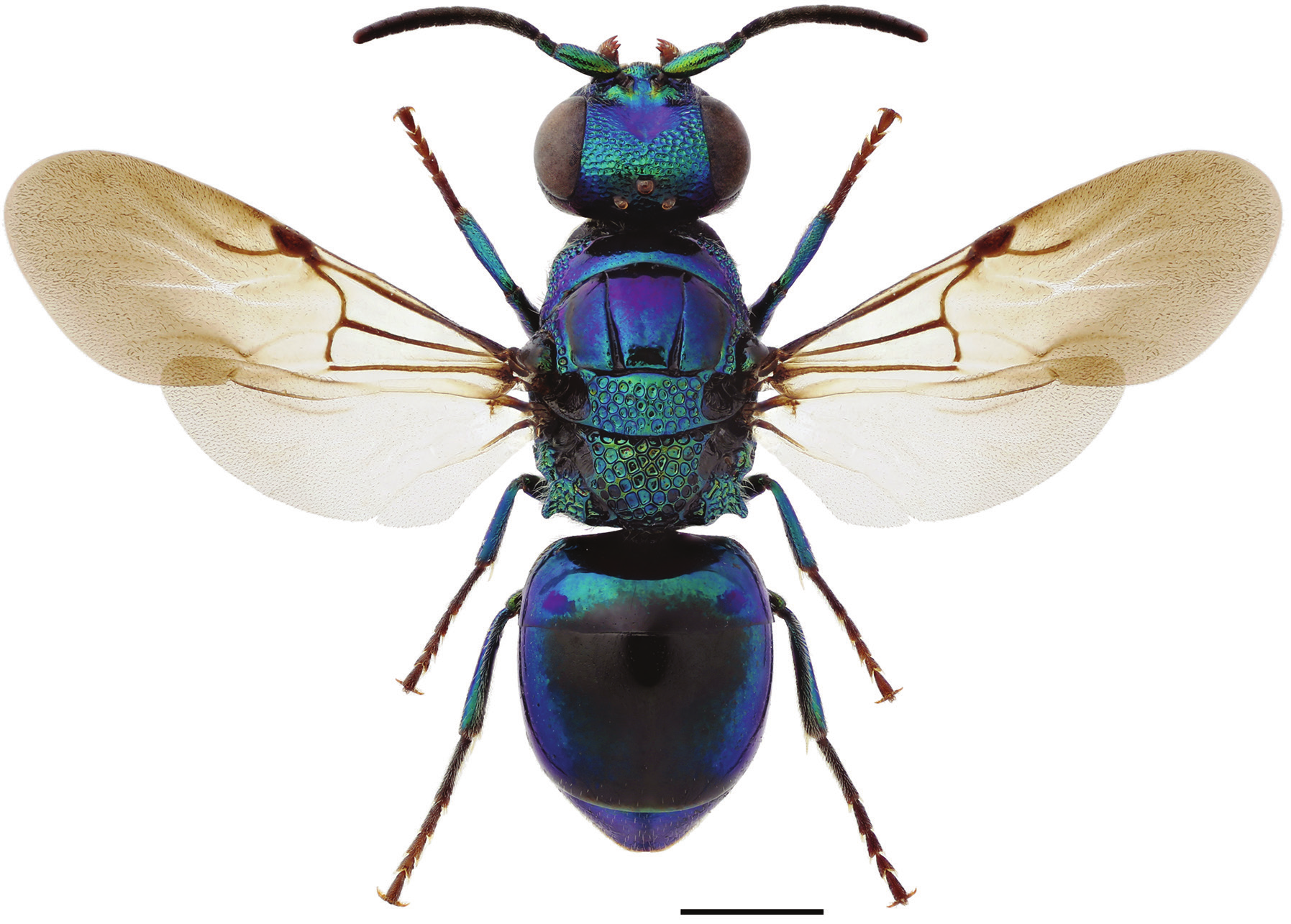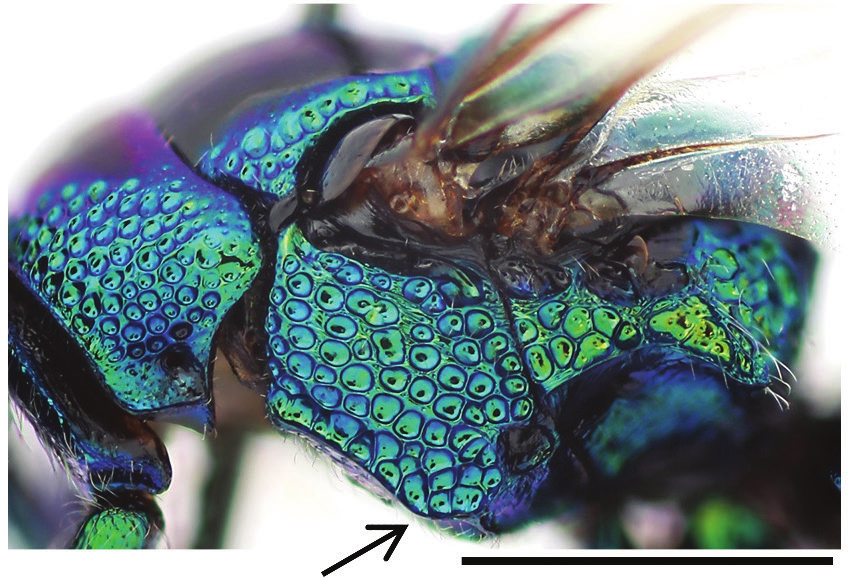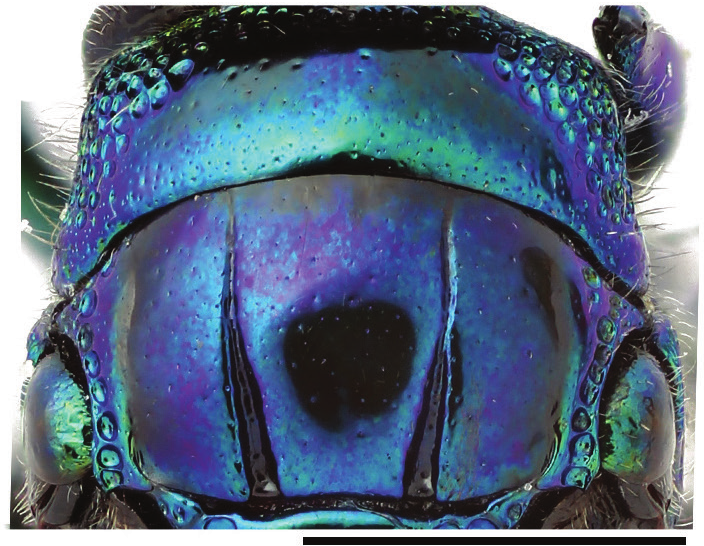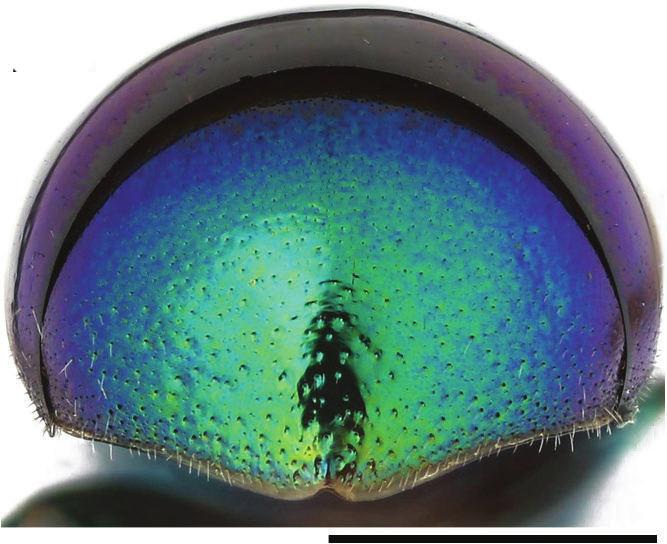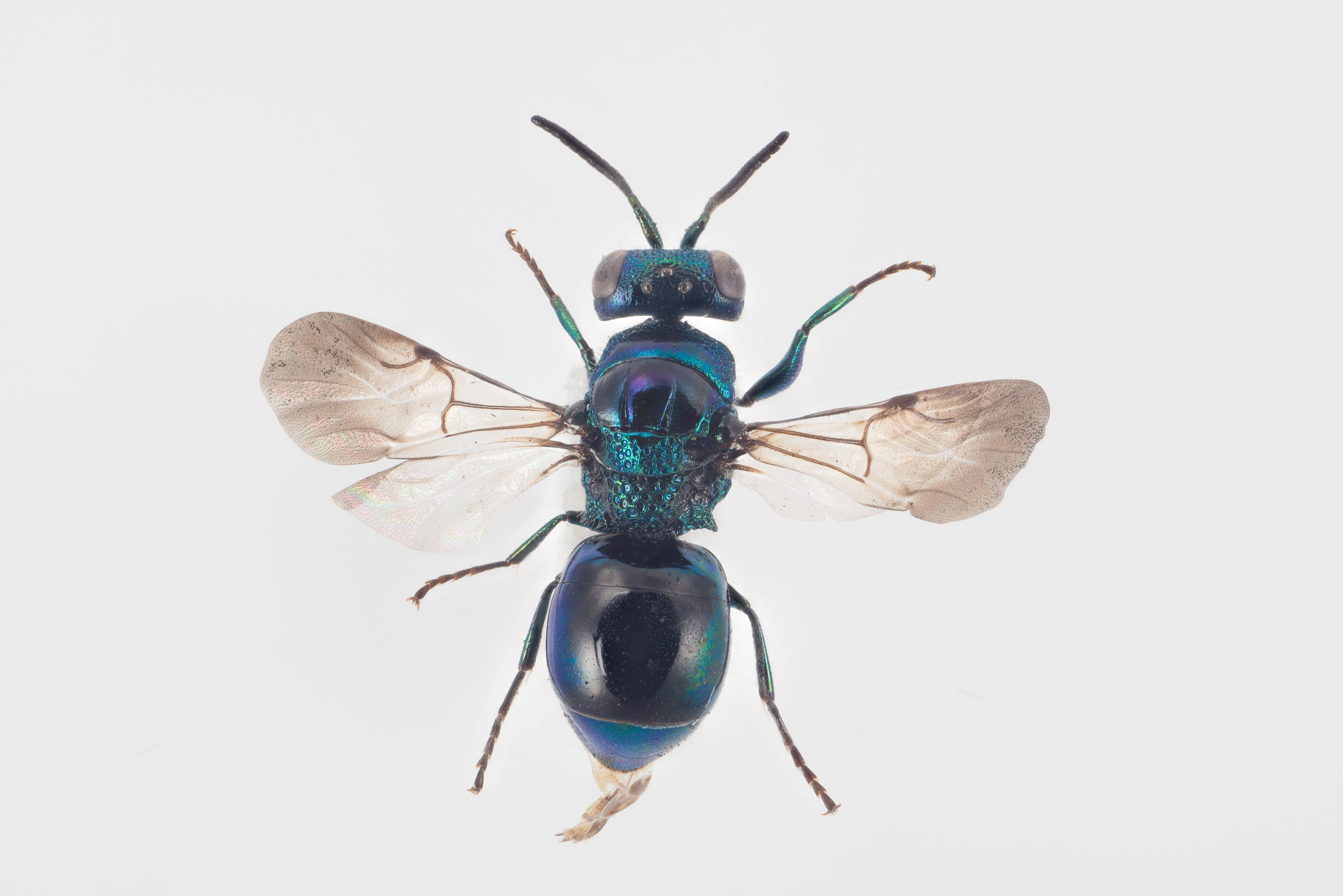Omalus aeneus
Figure 18
Omalus aeneus ♀. Scale 1 mm.
Omalus aeneus is a relatively common species that may be found in shrubs and warm slopes with large amounts of dead wood. Based on DNA-barcoding, O. aeneus seems to consist of five separate species in Fennoscandia. The species-complex therefore needs to be revised. Probably the species have different preferences among the hosts given for Omalus aeneus, which are Crabronidae in the genera Passaloecus, Pemphredon, and Psenulus.
- Innhold
- Diagnosis
- Distribution
- Biology
- Remarks
Diagnosis
Figure 19
Mesosoma, lateral view (arrow indicating mesopleuron): O. aeneus ♀. Scale 1 mm.
Figure 22
Pronotum and mesoscutum, dorsal view: O. aeneus ♀. Scale 1 mm.
Figure 23
T3, posterodorsal view: O. aeneus ♀. Scale 1 mm.
Length 3–6 mm.
The species resembles closely O. puncticollis, but usually has only very small punctures and short pubescence on the mesoscutum (Figs 18, 22), sparser and finer punctation on the pronotum (Figs 18, 22), and a shallower apical notch on T3 (Fig. 23). Some specimens have relatively coarse punctation medially on the pronotum and mesoscutum, but compared to O. puncticollis their pubescence is shorter, flagellomeres are longer, and the apical notch of T3 is shallower. In the female, the body is completely deep blue, violet or green (Fig. 18), whereas in the male it is dorsally black and laterally with green or blue reflections.
Distribution
Denmark, Estonia, Finland, Latvia, Lithuania, Norway, Sweden. Common.
Trans-Palearctic/Holarctic: from western Europe and northern Africa to Japan, China and Taiwan. Possibly accidentally introduced to North America (Kimsey and Bohart 1991) and Australia (Krombein 1979).
Be aware that the records present in the GBIF map may be misleading for some countries due to unrevised data sets or missing information.
GBIF Taxon: Omalus aeneus (Fabricius, 1787)Biology
Habitat: forest margins and clearings, semi-open sandy areas. Adults are often observed on sun-exposed leaves of trees and bushes, and they are attracted to honeydew of aphids. Occasionally they are also found on flowers of Apiaceae and Euphorbiaceae (Trautmann 1927, Hoop 1971, Linsenmaier 1997).
Flight period: June to August.
Host: Passaloecus corniger Shuckard, P. eremita Kohl, P. gracilis (Curtis), P. singularis Dahlbom, P. turionum Dahlbom, Pemphredon lethifer (Shuckard), P. lugubris (Fabricius) and Psenulus pallipes (Panzer) (Crabronidae) (Barbey and Ferriere 1923, Strumia 1997, Gathmann and Tscharntke 1999, our own obs.). The species has been reared from old resin-galls of Retinea resinella (Tortricidae) containing host nests. Females oviposit in live aphids and do not enter the host nest (our own obs.). A similar behaviour has been observed in O. biaccinctus (Winterhagen 2015).
Remarks
Mitochondrial DNA studies indicate that the Nordic and Baltic specimens of O. aeneus belong to at least five genetically distinct lineages (excl. O. puncticollis), and several other lineages have been found in other countries (Paukkunen et al. 2014). It is very likely that more than one species is involved.
